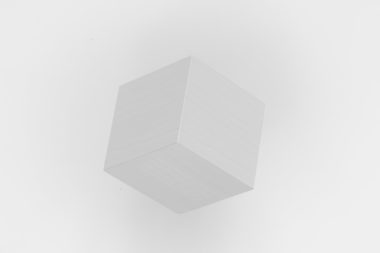- The client is an art and design university.
- The university has established an innovation center to create impact in society through new products and services based on its unique knowledge and experience.
- theLivingCore, in cooperation with local partner Design Terminal, has shaped the innovation center’s positioning, value proposition, offerings for different audiences, organizational structure and developed a spatial program.
- The university leadership approved the innovation center’s strategy, and its new director is implementing it.
MOME (Moholy-Nagy University of Art and Design) is located in Budapest, Hungary. It’s named after its alumnus, Hungarian painter and photographer László Moholy-Nagy, who was involved with the Bauhaus school in Germany. With over 140 years of history, it prides itself on integrating cutting-edge design with the tradition of arts and crafts.
Together with the local agency Simplexity, we have developed an integrated concept and implementation plan for MOME’s newly created Innovation Center. The concept covers the positioning of the Innovation Center – towards the inside of the university, as well as towards the outside, Hungary and Europe. In the implementation plan, we designed the organizational structure, the center’s service offering, as well as spatial guidelines, and communication activities.
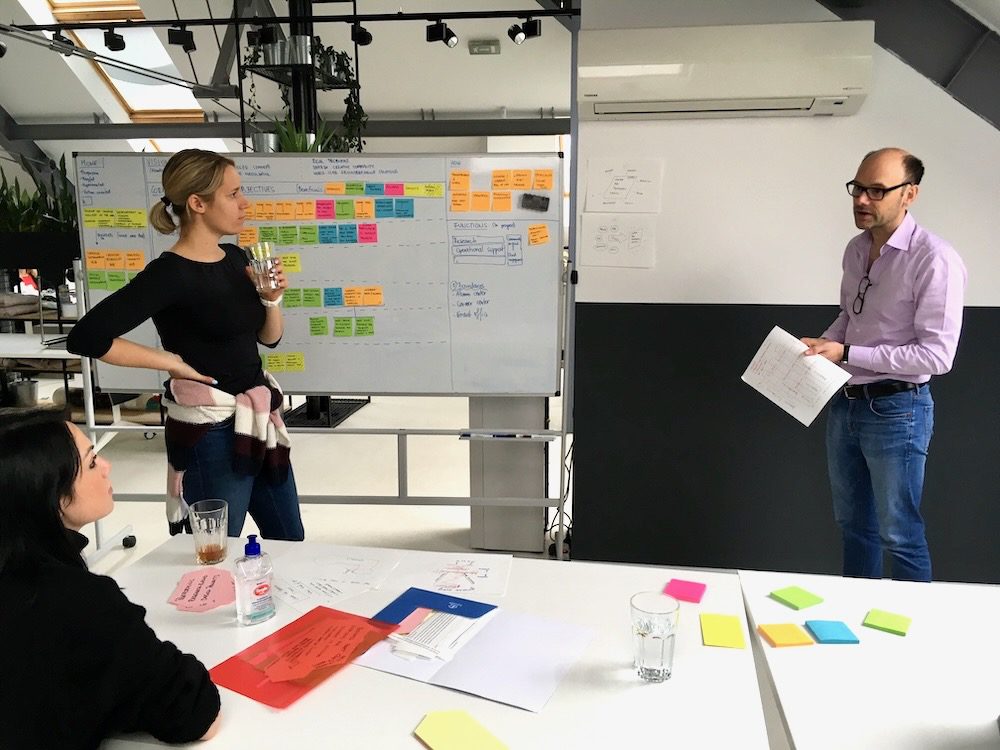
Our starting question was: “How can the Innovation Center be useful to both the university and the wider market?” The idea was to connect these two distinct communities,” the Director of the Innovation Center, Lāsma Ivaska, told us.
We started the project with a series of interviews with the university leadership, as well as the academia, staff, students, and clients. We set out to understand what makes MOME unique and what potentials lie in their skills, culture, and mindsets.
In addition, we have researched and created an overview of the most interesting innovation centers at art and design universities throughout the world. Places like the Zurich Center for Creative Economies, Helen Hamlyn Centre for Design, or Stanford d.school, became a valuable inspiration for designing the new organization at MOME.
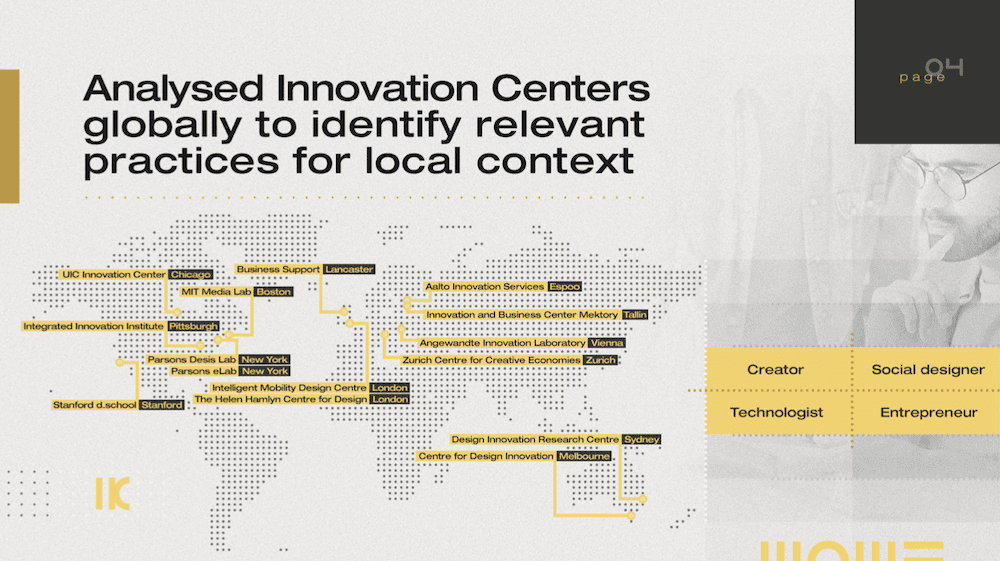
The purpose of the Innovation Center, as described by Lāsma, is to “apply design methods outside of creative industries, outside of art. They already know how to do it. But other sectors can benefit from this way of thinking, for example, healthcare, environmental or social activism.”
After a sense-making process and co-creation workshops, we came up with an overall concept of the Innovation Center, which was to build on the legacy of Bauhaus’ integration of art and design, while shifting the focus to topics relevant today – purpose, product, and the ideas of the New European Bauhaus.
Lāsma appreciates the concept created during the project: “It’s the very basis of what we do. It makes our values and priorities clear, we are using it every day as a guiding document. It also makes it easier to explain what we do to others, it gives us a story to communicate.”
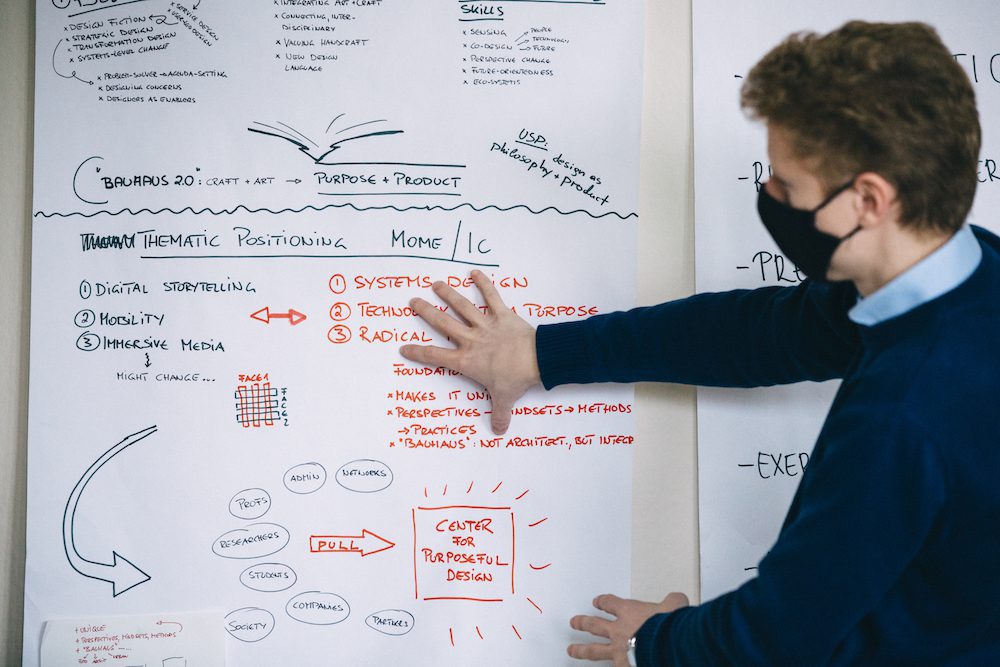
The Innovation Center will offer a project incubator for the university’s students, which is just launching. “I’m very excited about it, and it seems that the students are too. So far, they have had no business training, but they have lots of ideas. We involved MOME students in a recent national business idea competition and from 800 students, there were 100 project ideas submitted,” said Lāsma. It will also serve as a future-literacy education center, equipping the students with skills necessary to thrive and apply their ideas in the current VUCA world.
At the same time, the staff and students will conduct research-based design projects: “One of the projects we have just approved looks at how the use of virtual reality experiences can speed up physical recovery processes. We are focusing on the user experience of the process, especially the person’s ability to relax because scientific studies have shown that if people are relaxed it can have a positive impact on their healing journey. If you have mobility issues, you can be stuck indoors or in a hospital for a long time, which is often not the most ideal environment. VR settings could be useful in alleviating this.”
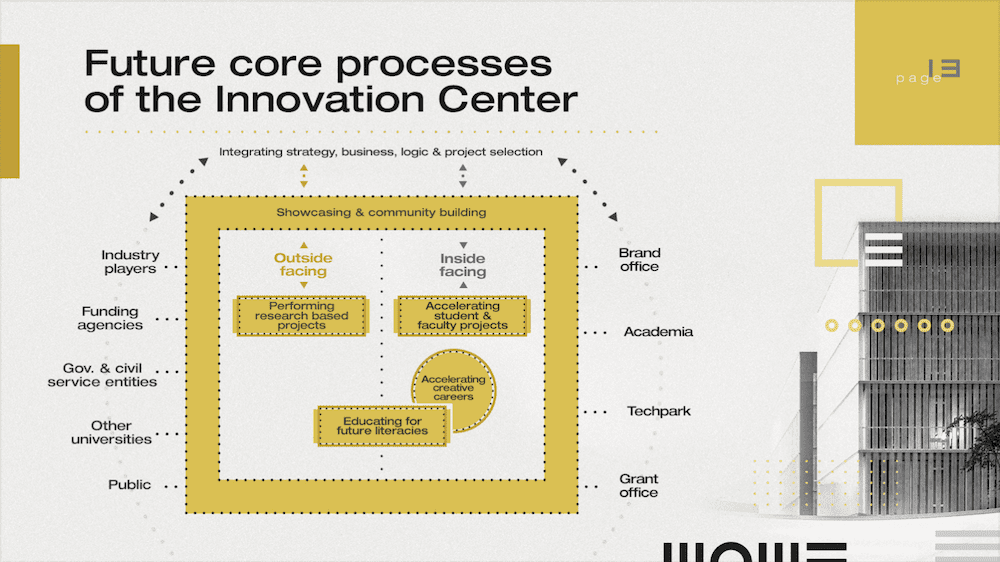
And what would Lāsma recommend to other organizations thinking about opening an innovation center? “Firstly, you need to have a clear value offering – a narrative. You need to clarify how you are going to be useful to the outside world. Second, you need to stick to it and keep your focus. When doing innovation, you are going to get a lot of requests, ideas, and opinions about what you should do and how. You need to stick to your story. And third, is to create an ecosystem of relationships. Innovation doesn’t happen behind closed doors. The more you can understand what is happening outside, the higher chance you can come up with something valuable.”
To conclude, we helped the University sharpen its future positioning and prepared the grounds for successfully bring forth the many ideas within the institution through new ventures offering purposeful products and services.
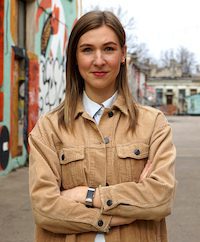
Lāsma Ivaska is leading the MOME Innovation Center. Before coming to Budapest, she co-created the first innovation district and smart city testbed for startups in Riga, Latvia. She also managed open innovation activities at Accenture and has 5 years of experience in market research and strategy consulting. Lasma is passionate about urban design innovations, mobility, and sustainable lifestyle, and is also a co-founder of a community non-profit organization Repair cafe Riga. Lāsma holds an MA degree in English literature and Politics from the University of Glasgow and an MSSc in Urban economics from Riga Technical University.
Subscribe to
our newsletter
Get special insights on the latest developments from us.
